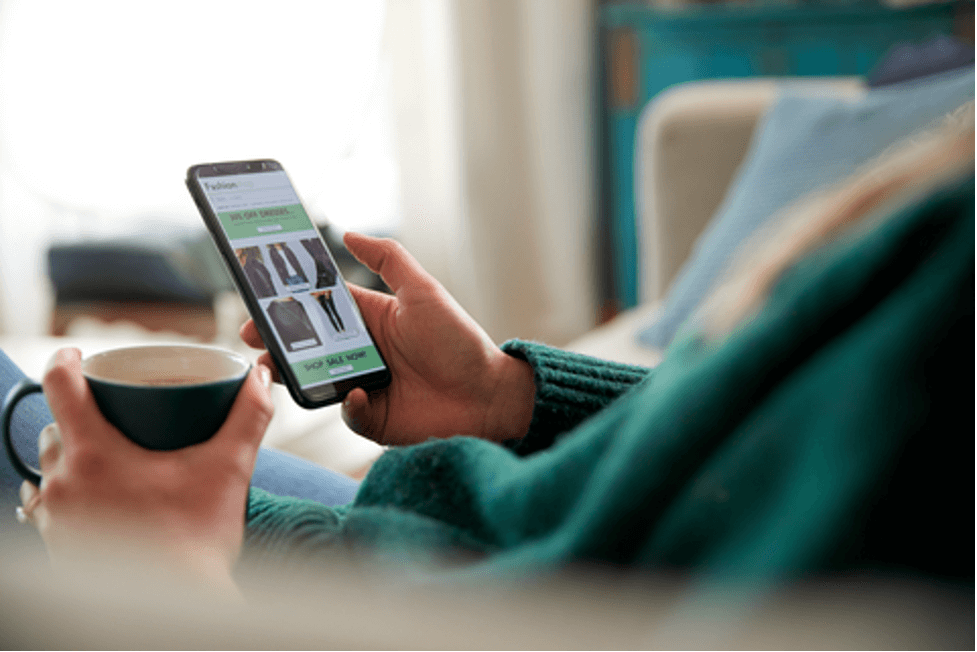Introduction
The holy grail of shopper research is to understand why people do what they do throughout their journey: before, during, and after their shopping experience. More than one research team has wished they could tag along without interfering, like a fly on the wall. Many questions we ask in shopper research have stayed the same over time, but the contexts in which we examine shopper behavior and the methods we use to capture them are constantly evolving.
Mobile ethnography tools have emerged as a powerful resource for researchers who want to understand shopping experiences. But before we look at how you can use mobile ethnography tools to generate insights about your shoppers, let’s take a quick look at the basics of shopper research.
From clipboards to dashboards
How we approach shopper research today might be unrecognizable to its earliest pioneers in the 1940s. Mystery shopping began as covert operations in which private investigators posed as employees to gauge the integrity of people in cash-handling roles at banks and retailers. Over time, researchers expanded their focus to emphasize collecting data about customer service. By the 1970s, companies recognized the make-or-break importance of customer satisfaction, leading to more of them embracing mystery shopping. For decades, however, it remained woefully inefficient due to the lack of technology – think clipboards, punch cards, and hard copies of everything.
Mystery shopping plays an essential role in many companies’ research programs today. Meanwhile, insights teams have developed new ways to deploy qualitative and quantitative research among real shoppers, so they no longer have to depend solely on mystery shoppers trying to replicate customer experiences. Intercept interviews, in-store observations, and shop-alongs represent some of the approaches researchers leverage to capture authentic shopping experiences. These methods help researchers understand and explore the motivations and influences that impact shopping decisions. And thanks to technology, all phases of modern shopper research are more agile and accurate, from recruitment and data gathering to analysis and reporting.
From single channel to omnichannel

Technological advancements have led to spectacular improvements in the efficiency, accuracy, and speed of primary research. Capturing in-store experiences has always been logistically feasible but only somewhat efficient until recently. The other primary channel for retail, mail order, was less accessible. The first merchandise catalogs emerged in the 19th century, pioneered by Aaron Montgomery, Sears & Roebuck, Hammacher Schlemmer, and others. Historically, exploring shopper experiences in the mail order channel depended on surveys conducted after the fact. Only with the advent of online shopping did it become possible to gather more immediate feedback from customers in non-store settings.
As more retail activity shifted online, the range of possibilities for shopping experiences expanded and became more complex. Amazon paved the way for online shopping to become ubiquitous and has had an outside role in shaping shoppers’ expectations by rewriting many of the rules (e.g., making “free” shipping the cost of entry for online merchants). At the same time, established retailers, including big box stores, have created online channels that customers can use exclusively or in tandem with brick-and-mortar locations by ordering online and picking up at a store.
The boundary between in-person and online shopping had already begun to blur, and then came COVID. Online shopping exploded in volume and expanded into non-traditional categories like groceries. The demand for no-touch delivery prompted businesses across the retail spectrum to develop remote and hybrid channels for shopping and purchasing.
Today’s shopping experiences incorporate more flexibility, variability, and speed than ever before. Researchers seeking to capture and understand the factors driving modern shopper behavior must keep up by incorporating new research methods that account for the new omnichannel customer journey. A customer’s purchase journey might shift between online and in-person touchpoints. Phone interactions, live chat, and email may all be in the mix. And shoppers are exposed to ads and marketing promotions across various platforms and contexts. Fortunately, there’s a new tool available that enables researchers to be with shoppers as they go about their everyday routines while minimizing intrusion and distraction. And that tool is Mobile ethnography.
The power of mobile ethnography tools
Data solely consisting of self-reported experiences and behaviors has limitations, even when obtained from the most earnest and cooperative respondents. Memories are faulty, and people inevitably apply subconscious lenses and filters to what they share with research teams in lab settings. Among other things, shoppers tend to edit out anything they assume is irrelevant, obscuring crucial contextual information. And facility-based research is sterile, as it’s stripped of the real-life influences and distractions that affect shoppers in actual retail settings (online or in-store).
In contrast, observing shoppers “in the wild” offers researchers an unvarnished, unfiltered perspective. They can discover and capture all the dynamics in play as the shopper makes their way along the path to purchase:
- Initial factors such as why they are shopping, whom they are with or consulting, and what draws them to a particular store, brand, or platform
- How they navigate through the store or the website
- Interactions with sales associates or support bots
- How they browse or search, what attracts their attention, how they use various information–product specs, pricing, reviews, and demo models
- What constitutes a barrier or obstacle to completing their shopping objective, and how they resolve it (or don’t)
Observing shopper experiences firsthand through video and mobile-based tasks is the most thorough and accurate way to capture shopping insights.
Mobile ethnography is a researcher’s superpower
Earlier, we mentioned in-store observations, intercept interviews, and shop-alongs as standard methods used in shopper research. Each has its benefits but also carries certain disadvantages. In-store observations are the least intrusive method, but the researcher lacks the ability to ask probing questions and seek clarification about what’s being observed. Intercept interviews can be great for capturing immediate, spontaneous feedback but are limited to a snapshot in time, making it challenging to engage respondents in-depth and relies on them to share accurate information about what led to that moment and what will likely happen next. Shop-alongs create better opportunities for in-depth engagement but placing the researcher “in the frame” with the shopper creates unavoidable distraction and potential disruptions of the process.
Enter the magic of mobile ethnography. Respondents are screened and recruited in advance to install a mobile ethnography app on their smartphones. The studies consist of a series of tasks participants complete over a period of time (days or weeks, depending on the project objectives). Tasks typically involve having participants answer open-text questions, upload photos and videos relevant to the target shopping experiences, and perhaps keep a journal.
Respondent input flows to a dashboard where the moderator can monitor progress, interact with individuals, and convene group chats among sub-groups. The dashboard neatly organizes data and facilitates analysis through coding, filtering, and out-of-the-box reports.
One of the most valuable aspects of mobile ethnography for shopper research is it’s channel-agnostic. Researchers can design a project to follow shoppers wherever their path leads them, from their homes and cars to websites and stores. It puts the research team in the respondent’s pocket.
Use mobile ethnography tools to tag along with your target market wherever and whenever they shop.

